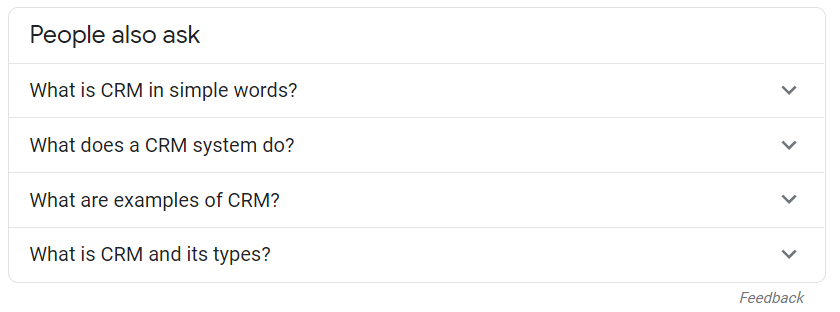When you think about SEO strategies and tactics, the first thing that probably comes to mind is keywords. SEO and keywords are synonymous for good reason, as you can’t really target an audience if you don’t know what words or phrases they’re searching for.
However, have you ever tried to read something on the internet that was clearly keyword stuffed? It’s not pleasant, is it? While keyword stuffing used to be the norm, the times, they are a’changin’ (thanks, oh wise Bob Dylan). The evolution of keywords has seen a dramatic shift over the year, with the focus now on quality over quantity, satisfying search intent, and ensuring your content is accurate.
But do we still perform keyword research and track how websites are performing in the SERPs on a keyword-by-keyword basis? Yep! Best practices, though, have changed significantly.
The evolution of keywords in SEO: Myths and facts
From keyword stuffing in written content to hiding keywords in a site’s background, a lot of practices that SEOs used to employ are now outdated.
Let’s take a look at some truths and some fiction about the evolution of keywords, and how targeting them has changed too.

Myth: Your keyword or phrase must be used X number of times (keyword stuffing)
Fact: While using a certain keyword a bunch of times used to work, it doesn’t anymore. Plus, it makes your writing sound spammy.
Google even gives the official word that keyword stuffing can, in fact, hurt your rankings.
They say:
“Keyword stuffing” refers to the practice of loading a webpage with keywords or numbers in an attempt to manipulate a site’s ranking in Google search results. Often these keywords appear in a list or group, or out of context (not as natural prose). Filling pages with keywords or numbers results in a negative user experience, and can harm your site’s ranking.”
We’re definitely not saying you should just forget using keywords in your writing altogether because it’s still advantageous to include the phrases you want SERP visibility for in your writing. However, it should be natural and pleasing to read, and you shouldn’t have to go back and look for spaces to fit more keywords in. In fact, please read through your work to make sure you didn’t mindlessly use your keyword excessively.
Where your keyword phrase or topic should occur naturally:
- Page title
- Heading(s)
- Paragraph text only where it makes sense
- Title tag
- Meta description tag
- URL
Example of keyword stuffing in paragraph text:
“Polarized sunglasses will change your life! Not only do polarized sunglasses block harmful UV rays from hitting your eyes, but they also look great. Polarized sunglasses are perfect for driving, hanging out at the beach, or just being outside. You should have at least two pairs of polarized sunglasses — a pair in your car, and a pair to grab when walking out your door.”
Google doesn’t choose who ranks for “polarized sunglasses” based on keyword density, as in how many times you say “polarized sunglasses” on your page. There are as many as 200 ranking factors to take into account, so simply stuffing your keyword into your content over and over isn’t going to be your magic bullet.

Myth: Focus most of your effort on ranking for your No. 1 most valuable keyword phrase.
Fact: Focus on supporting keywords and topics to build up your bread-and-butter keyword.
This is a difficult idea to grasp, especially for certain bosses who want that top SERP spot for what they believe their bread-and-butter keyword phrase is.
For example, let’s say you’re a SAAS company providing customer relationship management software (CRM). Your main objective should be to rank for “customer relationship management software.” Right?
Considering the top results for that term are softwareadvice.com, Capterra, businessnewsdaily.com, and Salesforce, you’re going to have one heck of a time accomplishing that. Of course, not all bread-and-butter keywords are quite as competitive as this one, but it’s a good example of why it’s wise to build up your content for more niche keyword phrases that still support your overall goal of ranking for “customer relationship management software.”
Examples of supporting content in this niche would be:
- A CRM comparison guide
- Tips on rolling out a CRM
- How to get the most out of using a CRM
- Business/sales advice tailored to your audience
Use your keyword and topic research skills to find less competitive phrases and start there. Create supporting content that ranks for longer-tail keywords while you’re working on the big gun. The more supporting content you have, the better your chances of gaining more visibility for that top keyword, too.
Some awesome tools/strategy tips to help you find ideas for supporting content are AnswerThePublic, Google’s “People also ask” box (pictured below), competitor monitoring/research, and BuzzSumo or another similar content tool.

Bonus: Building up your content will give potential customers more entrances to your site — as in, more opportunities to find you.

Myth: You should forget keywords altogether to focus on topics.
Fact: Don’t discount your old-fashioned keyword research! It’s still important.
Wait. Didn’t we just say at the beginning of this article that the old-fashioned keyword is dead?
We sure did. Here’s why.
Keywords used to be the end-all-be-all of SEO. We could pick a keyword and do a bunch of on-page keyword stuffing and link building to start ranking for it. They were super short keywords too, like “SEO basics,” “Minneapolis electrician,” and “payroll software.” The time when an SEO could do some magical stuff and suddenly a website would rank is very over. Keywords, in that sense, are dead.
When it comes to topics versus keywords, you will want to focus your efforts on topic research and then find keywords that fit search intent.
This is the evolution of keywords in SEO in action. Keyword research looks a lot different now, and yes, it should be entwined with topic research. You can still use it as a baseline, though, to determine where to focus your energy with your content.

Here’s an example of how keywords and topics should work together:
Let’s say you’re a SAAS company providing property management software to landlords. Some of your features include letting potential renters apply online, tracking rent payments, managing maintenance requests, and providing a place for tenants to get ahold of you (and track it).
When you perform your keyword research, you discover that “property management software” and “software for landlords” are your top keywords (surprise, surprise). You use that knowledge to make sure your main pages include those bread-and-butter phrases.
Your keyword research also unearths some other great keywords you hadn’t considered, like “tenant screening service,” “rental application form,” and “tenant communication app.” You can put those on your website pages, sure, but then take those and expand them and dig into them to come up with some awesome topic ideas. Don’t focus on those narrow keywords themselves — let them grow!
I like how Kameron Jenkins, then director of brand, content & communications at Botify, puts it:
“We need to remember that keywords are the input.
When writing for search, we are creating the output.
So instead of asking ‘How can I include this keyword?’ we need to start our content creation by asking ‘How can I answer this query?'”
For instance, “tenant screening service” can grow into some of these topics:
- How to perform a tenant screening
- The biggest mistakes landlords make when screening tenants
- How much does tenant screening cost?
- What’s the easiest way to screen potential tenants?
- What are the laws around tenant screening?
- A new landlord’s guide to tenant screening
The future of keywords and SEO
Google is constantly working toward making our traditional ideas about keywords irrelevant. It’s clear that we’re working toward a lot of content strategy and less traditional SEO. The evolution of keywords is continuing every day — what’s most important is for content marketers to keep up with the changes.
Get high-quality, SEO-friendly content that meets Google’s latest guidelines. Our talented team of writers can create optimized content for your brand, from blog posts to website copy. Talk to a content specialist to get started.



